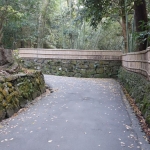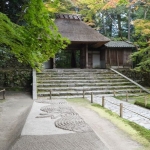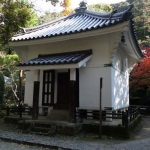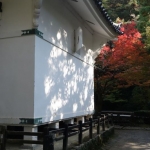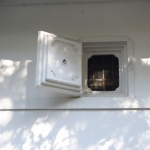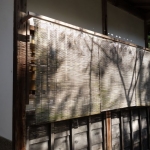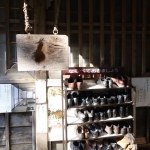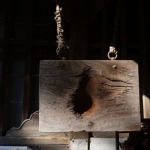Honen-in
A great deal of the charm of Honen-in comes from its location near the Philosopher’s Path in the woods at the foot of Nyoi-ga-take Mountain, providing a very special quiet retreat from the city.
Honen-in is named after Honen (133-1212), who founded the Jodo sect of Buddhism in the beginning of the 13th century and erected a statue of Amidha Buddha on the present site. He and his pupils Juren and Anraku lived in a hut and worshipped six times every day and night.
The main halls and gardens date from the middle of the 17th century when Jodo came under the patronage of the Tokugawas. Some rooms from Toyotomi Hideyoshi’s Fushimi Momoyama Castle were transferred here in the 17th century.
Long persecuted by older more established denominations, the faithful persevered and now Jodo Buddhism is the second largest sect in Japan, surpassed only by the Shin sect which is considered an offshoot of Jodo.
Only after the Tokugawa Shoguns came to power and the monks of Enryku-ji temples and their monks had been eliminated was the present main hall (Hondo) built in 1680.
It has been the tradition of the temple for the monks to place 25 flowers on the floor before the Amida image every morning. These flowers symbolize the 25 Bodhisattvas who accompany Amida when he descends from his Western Paradise to receive the souls of the newly deceased.
The two long rectangular sand mounds one walks between are raked by the monks, using designs symbolizing the season (on the left) or offering abstract symbols of a religious nature, such as water…symbolizing impermanence (on the right). It is believed that walking between them purifies body and soul.
If you listen carefully around the main hall, a single knocking sound comes from somewhere every one or two minutes. It is the sound of a shishiodoshi. This device is made from a short, hollow bamboo pole. The bamboo is placed above a basin so that it gets filled with water little by little. As the bamboo tube fills with water, it becomes too heavy and falls down. Then the empty bamboo pole falls right back to its previous position, and hits a stone with a “thud.” That is how the sound is made. It was invented to scare deer or wild pigs in order to keep them out of the garden, but now it is mostly enjoyed for its gracious sound.
The tombs of several important cultural figures are found here, such as Tanizaki Junichiro, Kuki Shizo, and Kawakami Hajime.


